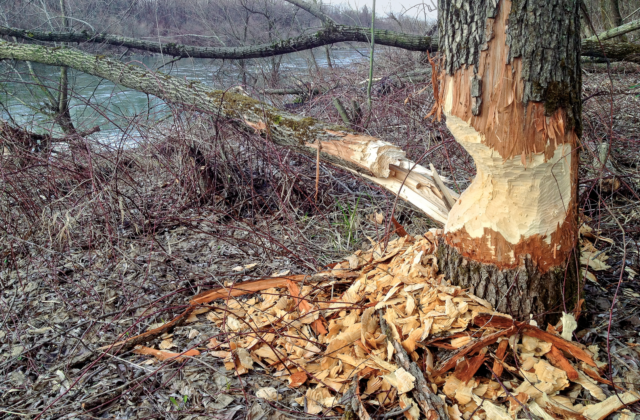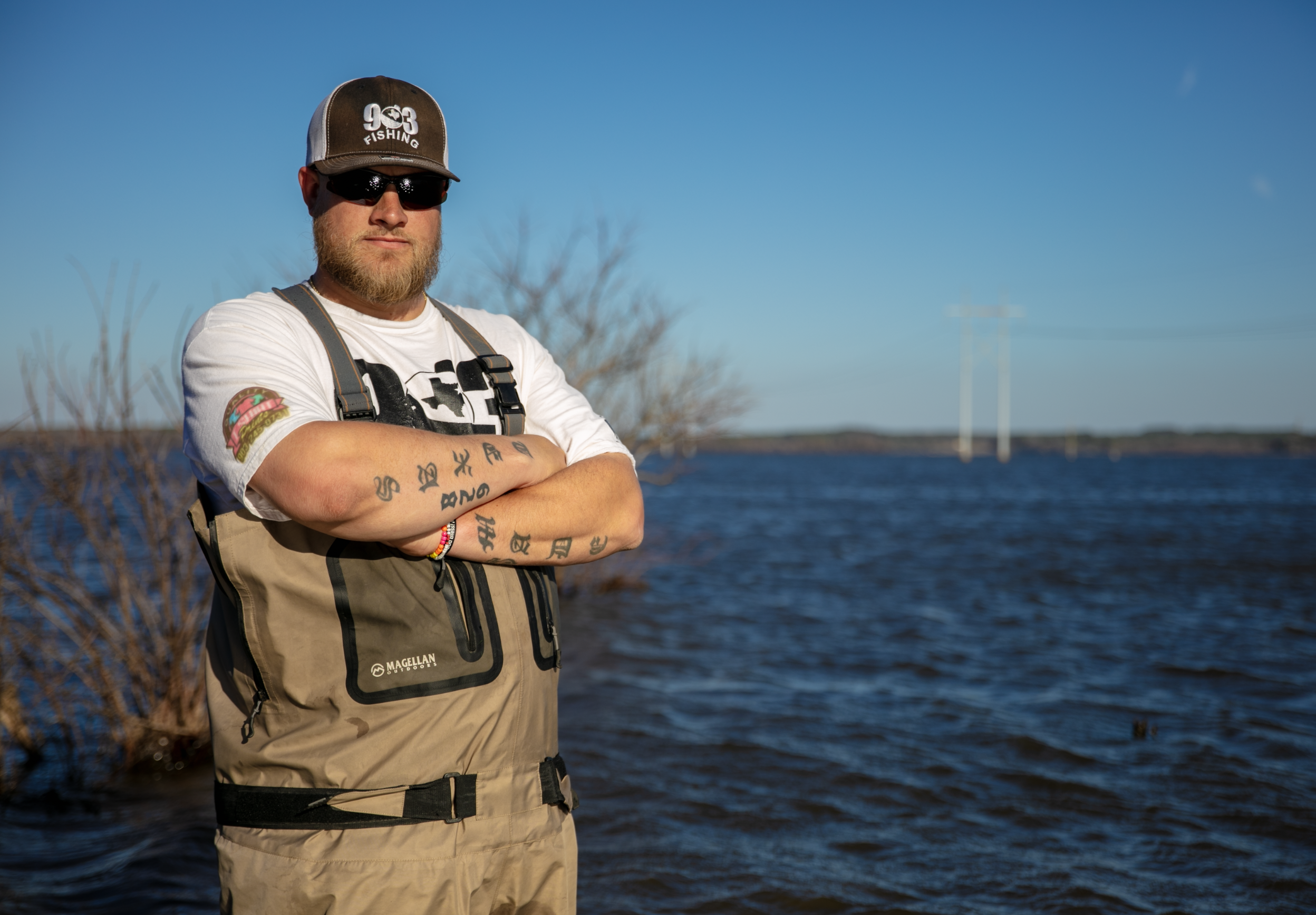by Mark McDonald
Being a private wildlife biologist, sixty percent of my workload is beaver trapping; ten percent is conducting environmental assessments and damage estimates; ten percent is wildlife and timber tax strategies; ten percent is lake and fish management; and ten percent is coyote control.
I trap an average of eleven hundred beavers, the largest rodents in North America, each year. There is no shortage of beaver or beaver damage in Texas. Due to low fur prices and increased habitat availability (the building of large lakes and ponds), the beaver population has exploded, and in many areas exceeds the holding capacity of the habitat. Each spring, dispersement of displaced two-and-a-half-year-old beavers occurs. They then wander the waterways seeking a mate in any habitat that is void of a beaver family (colony).
A beaver colony is a population of two to ten beaver and claims up to twenty-five acres of habitat. This colony will consist of a mated pair that is four years old or older, two to four young per year, and the young will stay for two-and-a-half years. At that time, the two-and-a-half-year-olds leave the colony to find a habitat and start a family of their own.
A full-grown, mature beaver weighs forty to fifty pounds when four years old. It has no enemies in the water. That’s right. Not even a ten-foot, six-hundred-pound alligator will kill a beaver in the water. Only a man with traps or a gun can, or will, kill a grown beaver in the water. However, on land, mountain lions, bobcats, coyotes, and even big dogs kill beavers, occasionally. For this reason, beavers avoid land.
Beaver dams in wild areas are wonderful for ducks, frogs, fish, water mammals, and aquatic plants. They are fine for wildlife preserves, type-two hunting areas, and duck marshes. They can be economically devasting in private lakes and ponds, timber lands, road culverts, or cornfields. An oil company that I trap for was unable to get to over fourteen well sites because beavers plugged road culverts and flooded the access roads. A $3 million lake dam was washed out from plugged drain pipes, blocked spillways, and holes beavers dug in the dam. In Denton, Texas, $20,000.00 worth of corn was harvested by beavers in two weeks. An azalea dam was built in downtown Tyler, Texas just before the annual Azalea Trail drive causing havoc for tourists. This was done by beavers in two nights! This is why landowners hire me to trap the beaver.
Trapping the beaver is, by far, the most effective way to manage a beaver population. The first step is to scout the problem area for fresh beaver sign. Downed trees, fresh wood chips from chewing, fresh leaves in the water, dams, active dens or lodges, tracks, scat in the water, slides or well-used trails going in and out of the water or to and from the dam or hut are signs that beaver are living in and actively working the area. This beaver sign helps me decide where to make my sets. Before getting started, if you decide to battle the beaver yourself, most states require a hunting license and a trapper’s license to trap fur-bearing animals, but laws and regulations vary from state to state. Check your local requirements before deciding to try trapping beaver yourself.
I typically use one of three trap types depending on the location. The old mountain man steel trap on a drowning slide is still the most effective method, but, due to stray dogs, pets, and people’s attitudes, I only use those on certain isolated farms and ranches. The most often used trap is a humane killing trap called a conibear, a body-gripping trap. It kills the beaver instantly. On a wise beaver, I will often use a self-locking snare trap. On certain occasions I live trap beavers, but specialty live traps are extremely dangerous to children and dogs so I don’t use them. I have my own design that is much more safe but also much more expensive. Then, I have the ethical problem of, “Where do I release this animal?” If I release it and it damages someone else’s land, I am responsible. If I release it in an area already inhabited by beavers, the territorial family will kill the intruder.
After the beaver colony is removed, I often burn the hut down to keep newcomers from easily moving in and establishing their own new colony. I then break a hole in the dam to drain water back to normal levels. To dynamite a hut or dam is expensive and can damage nearby wells. I don’t do that. I burn them using only diesel fuel. Gasoline can cause explosions. Many people have been hurt or killed that way. If you try to tackle beaver problems yourself, be very careful. Keep an eye open for snakes around beaver huts, dams, or plugged culverts. This is prime habitat for cottonmouths and copperheads. Never wear chest waders because beavers cut deep trenches underwater. Over the years, beaver trappers and duck biologists have lost their lives falling into one of these trenches, filling their chest waders with water, and drowning. Knee-high rubber boots and a life preserver are a better choice in the beaver’s environment.
Battling beavers is a task that is often necessary to prevent serious property damage, or return already damaged areas back to their native state. If ever you are unable to tackle your beaver problems by yourself, I’m easy to get ahold of and more than willing to help with any beaver problems you may have. God Bless, Mark












